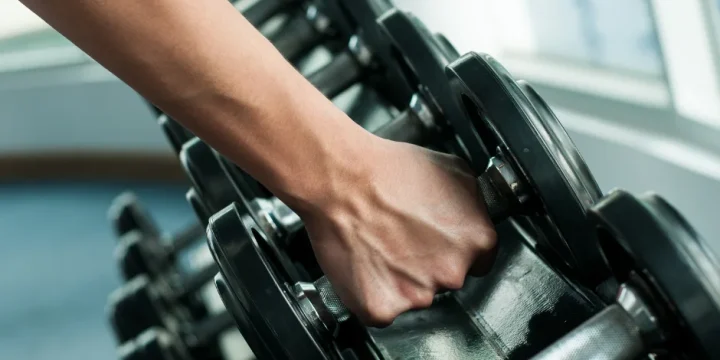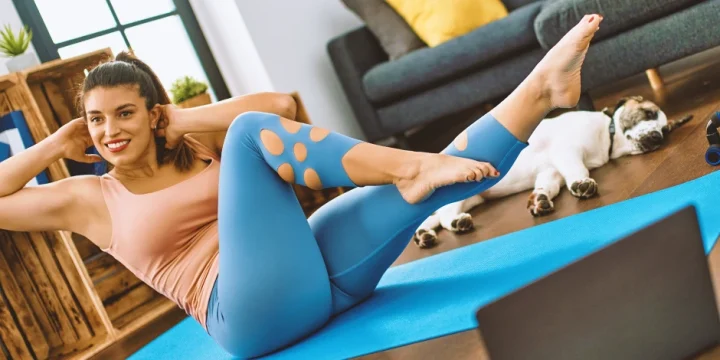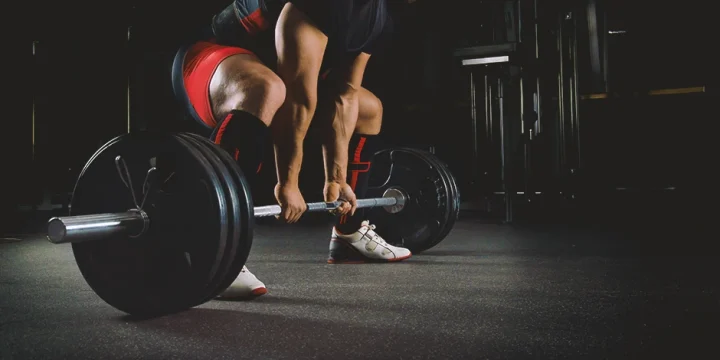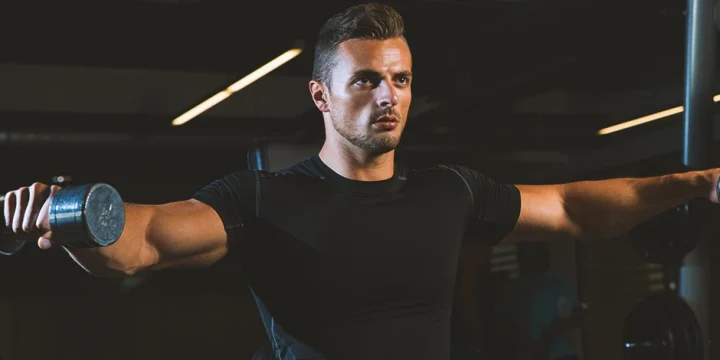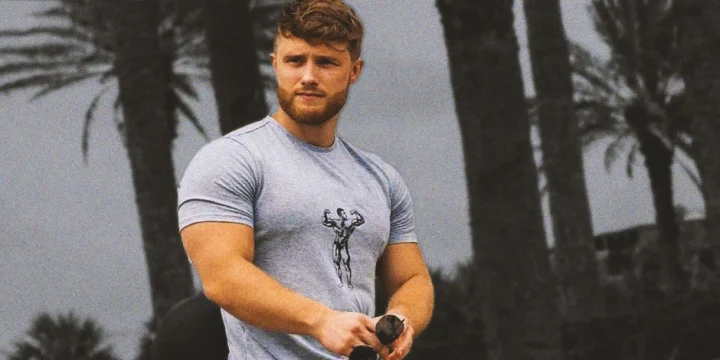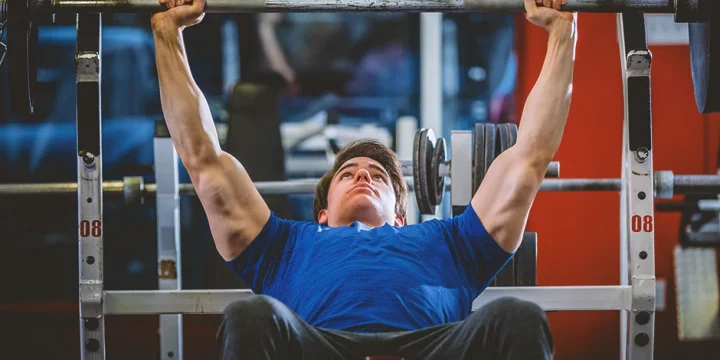Being a fitness trainer, I can confirm that the arms are one of the most commonly worked-out muscle groups because their growth proves you hit the gym.
Yet, you won’t have a balanced physique if you only do isolation exercises (like bicep curls). That’s where compound arm exercises come in. In my many years of training clients, I’ve always preferred compound exercises. And over the years, I’ve noticed that some are more effective than others.
In addition to eating a clean and balanced diet, we recommend taking high-quality protein supplements to fuel your muscles after your next compound exercise routine.
In this article, I’ll share my list of the best compound arm exercises for stronger and leaner arms.
Quick Summary
- To build stronger and leaner arms effectively, incorporating compound exercises like bench presses, pull-ups, farmer's walks, and bent-over rows is essential.
- These exercises not only target multiple muscle groups simultaneously but also enhance overall upper-body strength and stability.
- A study published on the PubMed website found that single-joint exercises resulted in 11.06% hypertrophy of elbow flexors compared to 5.16% in multi-joint exercises after 8 weeks of resistance training.
- Drawing from a wealth of practical applications, it's evident that a balanced combination of compound and isolation movements maximizes muscle growth and functional strength in arm workouts.
What Are the Best Compound Exercises for the Arms?
The best compound exercises for the arms are those that integrate core stability while building your arm muscles. Some of these include the bench press, pull-ups, farmer’s walks, and bent-over rows.
Top 10 Compound Exercises for the Arms

Based on our research and observation of clients over the years, here are our top picks for the best compound arm exercises.
1. Standing Overhead Press
The standing overhead press, a staple in my training programs, is an upper-body weight training exercise where you push a barbell overhead while standing. From my experience, it effectively works the chest, shoulders, triceps, and upper back, providing a comprehensive upper body workout.
It works the chest, shoulders, triceps, and upper back.
One of the studies from the National Center for Biotechnology Information website suggests that the overhead press performed using a barbell excites muscles more than using a machine to stabilize the trajectory of the external load [1].
Here’s how to do it with perfect form:
- Load up a barbell on a squat rack so it’s directly in front of your shoulders (in other words, you shouldn’t have to stand on your tip-toes when picking up the barbell).
- Hold the barbell with hands just a little more than shoulder-width apart.
- Tighten your core, squeeze your shoulder blades together, and pick up the barbell.
- In the same breath (and keeping your core engaged), step back from the rack, keep your feet shoulder-width apart, and press the weight up until your arms are straight.
- Bring the barbell down in a controlled motion back to the starting position.
- Repeat for reps.
2. Close Grip Bench Press
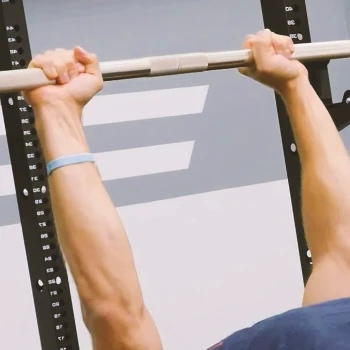
In my years of coaching, I've always regarded the bench press as the king of upper-body exercises. It not only directly works your triceps, shoulders, and pecs but also engages the lats, upper back, and biceps for stability, as I've observed in numerous client transformations.
It directly works your triceps, shoulders, and pecs while working the lats, upper back, and biceps for stability. The close grip bench press variation emphasizes the triceps, shoulders, and upper pecs.
Here’s how you do them:
- Lie down on a flat bench and grab the barbell; both your arms should be parallel to each other.
- Lift the weight off the rack and ensure the barbell is in line with your neck and arms straight.
- Lower the bar down and touch it to the middle of your chest. Hold this position for a second.
- Explode up back to the starting position, your arms fully extended.
- Repeat for reps.
3. Incline Press
From my experience, the incline press is a favorite among clients for its effectiveness in targeting the upper chest. It's one of the most popular bench press variations I recommend for those looking to enhance their upper body aesthetics.
To do the incline press, follow the same steps as you would for the close-grip bench press, except use an incline bench and grip slightly wider than the width of your shoulders.
4. Decline Press
Having trained a variety of clients, I've found that the decline bench is particularly effective for focusing on the lower pec muscles and is generally easier to perform than the flat and incline bench press.
Performing the decline press follows the same steps as doing the incline press, except you’d use a decline bench.
5. Single-Arm Dumbbell Row
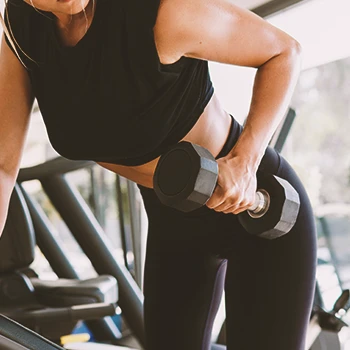
The single-arm dumbbell row is a great compound movement that targets many large muscle groups, such as your traps, rhomboids, rear delts, lats, biceps, and forearms.
A study featured on the Pubmed website examined the differences between unilateral dumbbell row (DR), a multiple-joint exercise, and unilateral biceps curl (BC), a single-joint exercise, in terms of their impact on strength and muscle thickness (MT) of the elbow flexors.
The findings revealed that after 8 weeks of resistance training (RT), the single-joint exercise led to more significant hypertrophy in the elbow flexors compared to the multi-joint exercise, while strength gains were more pronounced in exercises specific to the training [2].
Here’s how you do them properly:
- Find a dumbbell that's right for your fitness level.
- Place your left knee and hand on a flat bench with your right leg extended away from the bench.
- Pick up the dumbbell with your right hand.
- Lean forward, keep your back straight, and have your right foot firmly planted on the floor.
- Let the dumbbell hang at arm’s length, and then pull it up by driving your elbow towards the ceiling, keeping your elbow close to your body, and squeezing the shoulder blades.
- Lower the dumbbell back down, repeat for reps, and switch sides.
Also Read:
6. Barbell Bent-Over Row
The barbell bent-over row is a double-handed barbell variation of the single-arm dumbbell row. It works the same muscles.
Here’s how you do it:
- Stand in front of a barbell loaded with the appropriate amount of weight.
- Bend down to pick up the barbell by hinging at the hips and keeping the back straight and chest up (your upper body should be nearly parallel or directly parallel to the ground).
- Grab the barbell with your shoulders directly above your hands using an overhand grip.
- Engage your core, lift the chest slightly, and pull the barbell off the floor by straightening your legs and extending your hips (the barbell should hang at arm’s length in front of your knees). This is your starting position.
- Keeping the core engaged, pull the barbell towards your lower chest/upper abdomen by driving your elbows toward the ceiling (focus on squeezing your shoulder blades together).
- Lower the barbell back down to the starting position and repeat for reps.
7. Diamond Push-Ups
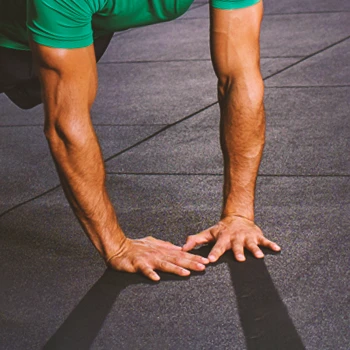
Diamond push-ups are a variation of the traditional push-up. In addition to working the chest and triceps, they heavily focus on your shoulder muscles.
The imbalance from doing diamond push-ups also engages your core for stability.
Here’s how you do them with perfect form:
- Get into a push-up position, and place your hands together so your thumbs and index fingers touch to form a diamond shape.
- Keep your core engaged and lower your body till your chest touches the floor.
- Push yourself back to the starting position and repeat for reps.
8. Underhand Grip Pull-Ups
Underhand grip pull-ups are a highly effective biceps exercise that build upper body strength and stability.
Here’s how you do them with perfect form:
- Grab onto a pull-up bar with a shoulder-wide underhand grip and get into a dead hang.
- Pull yourself up (without kipping your legs) until your chin goes above the bar.
- Hold this position for a second, and then let yourself down back to a dead hang.
- Repeat for reps.
While doing an overhand grip pull-up has its benefits, it won’t work your biceps as well as an underhand grip pull-up.
9. Chest Dips
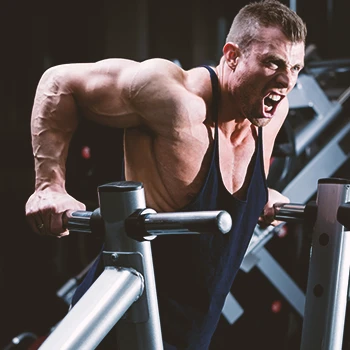
Chest dips are one of the best chest compound exercises that target your pecs, upper arms (shoulders and triceps), and core.
You’ll need to do these on a parallel bar.
Here’s how you do them:
- Get to a dead hang by placing your arms on the two parallel bars (the bars should be wider than your shoulder and tall enough to let you dip down).
- Push yourself up and straighten your arms so that they’re fully extended.
- Lower yourself by bending the elbows and slightly leaning forward (which will emphasize the chest muscles).
- When your shoulders are slightly below your elbows (which should be slightly flared out), pause for a second and return to the starting position.
- Repeat for reps.
10. Farmer’s Walk
Farmer walks are considered a functional strength and compound exercise. Often done by strongman athletes, they’re notorious for improving grip strength.
They primarily work the forearms, traps, shoulders, legs, and core muscles.
Here’s how to do them:
- Grab a pair of dumbbells, kettlebells, or a pair of two equally heavy objects you can grip and carry (you should be able to walk without the objects obstructing your path).
- Stand with your feet shoulder-width apart with the weights on either side of you.
- Engage your core, lift your chest up, and pick up the weights, holding them with a firm grip.
- Walk at a brisk but controlled pace (keep your core engaged, shoulders back, and posture straight).
- Walk for the desired distance, take a quick break, and repeat for sets.
Why Choose a Compound Exercise Over an Isolation Exercise?
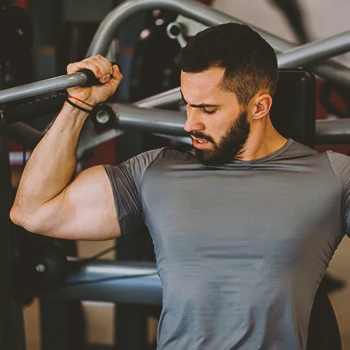
You should choose a compound exercise over an isolation exercise because it uses more than one muscle group, which leads to a higher heart rate, more calories burned, and higher fitness levels [3].
However, if your goal is to build and sculpt a certain muscle, then you can add some isolation movement after performing a compound exercise.
For example, if you want a stronger chest, you can perform dumbbell flys after bench presses.
We recommend doing a combination of compound and isolation movements to get the most out of your fitness routine.
Related: Upper Body Compound Exercises
Benefits of These Exercises
Here are some of the benefits of doing compound arm exercises:
- Builds muscle: Compound arm exercises work on more than one muscle group per movement. So, they’re highly effective at building more muscle.
- Burns fat: Because compound arm movements work your arms, core muscles, and other muscles at once, they demand higher endurance levels. The result is a higher heart rate and more calories burned.
- Increases strength: Doing compound movements requires a combination of raw power and technique from multiple muscles — both of which increase your overall strength.
- Builds joint strength: Compound movements are multi-joint movements. So all the joints involved in a compound exercise will benefit from your lifts, leading to stronger and more flexible joints.
“A lot of the most popular gym exercises are compound exercises, and doing them as you get older can help maintain and increase muscle mass and keep you strong and coordinated.”
- Dr. Mike Bohl, MD, Nutrition Coach
Related Articles:
Safety Precautions

Compound exercises carry as much risk as they do benefits.
If you're a beginner, we highly recommend speaking to a physician before beginning a compound arm workout program.
If you’re a healthy teenager or young adult, here are some safety tips to keep in mind when doing compound arm lifts:
- Use perfect form: Compound lifts require complex movements that demand proper form. Not following the right form could lead to immediate injury or injuries that worsen over time.
- Warm-up: Because compound arm exercises are multi-joint, you need to warm up your arms and body before engaging in any heavy lifts. Warm up with some mobility drills and a very light version of your lift.
- Stay hydrated: Compound arm exercises are highly demanding, so you need to be at your A-game when doing them. Staying hydrated can improve your lifts, thereby enhancing your gains.
- Sleep for recovery: Research shows that sleep helps with muscle building and recovery. Poor sleep, on the other hand, is associated with poor muscle recovery [4].
- Nutrition and supplementation: In addition to eating a high-protein diet, we also recommend supplementing your nutrition with a high-quality protein powder to fuel your muscles.
FAQs
What Compound Exercises Build Biceps?
Compound exercises like pull-ups, bodyweight curls, T-bar rows, dumbbell rows, inverted rows, bent-over rows, and lat pulldowns build biceps. When doing these exercises, use the mind-muscle connection to focus more on the biceps.
Can You Build Big Arms With Compound Exercises?
Yes, you can build big arms with compound exercises. As per our research, compound movement increases the production of your body’s natural growth hormone, which encourages increased muscle growth and strength.
How Can Compound Arm Exercises Be Integrated into Various Training Programs?
Compound arm exercises can be integrated into various training programs by adjusting the intensity, volume, and frequency to align with specific goals like strength, hypertrophy, or endurance. This versatility makes them a valuable component of diverse fitness routines, catering to a wide range of objectives.
What Role Do Compound Arm Exercises Play in Injury Prevention and Rehabilitation?
The role of compound arm exercises in injury prevention and rehabilitation is significant, as they enhance joint stability and promote balanced muscle development. These exercises are particularly beneficial in strengthening supporting muscles and tendons, reducing the risk of injuries, and aiding in recovery.
How Do Compound vs. Isolation Arm Exercises Compare in Terms of Caloric Burn?
Compound arm exercises typically lead to a higher caloric burn compared to isolation exercises due to the engagement of multiple muscle groups simultaneously. This makes them more efficient for individuals aiming to maximize energy expenditure and fat loss in their workouts.
What Impact Do Compound Arm Exercises Have on Functional Strength and Daily Activities?
Compound arm exercises have a substantial impact on functional strength, enhancing the ability to perform daily activities with ease and reducing the risk of injury. By mimicking natural movement patterns and involving multiple joints, these exercises improve overall body coordination and strength.
What Advanced Techniques in Compound Arm Exercises Are Beneficial for Experienced Athletes?
For experienced athletes, advanced techniques in compound arm exercises like supersets, drop sets, and pyramid training can significantly enhance workout intensity and effectiveness. These methods challenge the muscles in new ways, helping to break through plateaus and achieve advanced fitness goals.
References:
- https://www.ncbi.nlm.nih.gov/pmc/articles/PMC9354811/
- https://pubmed.ncbi.nlm.nih.gov/31268995/
- https://pubmed.ncbi.nlm.nih.gov/19204579/
- https://www.ncbi.nlm.nih.gov/pmc/articles/PMC5749041/
About The Author
You May Also Like
